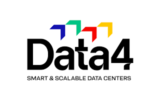Data center operation: four pitfalls to avoid
The investments required for the construction or renovation of a data center are very substantial. IT production service continuity depends on this asset, meaning that disciplined, industrial operation must be implemented to make it sustainable and profitable. However, it is often observed that the resources and efforts made with respect to the operation of data centers remain insufficient. Four pitfalls to avoid.
A team reduced to its simplest expression
Whether for real estate or technical installations (electricity, cooling, security), companies invest heavily in the construction or renovation of their data centers. By contrast, they frequently underestimate the resources required for efficient operation, in particular with regard to the human dimension. Generally based on outsourcing, from the planning of computer rooms to the multi-technical maintenance of the building, the operations team is often reduced to the bare minimum, with one expert employee who possesses a broad spectrum of skills, covering both IT (computer networks and equipment) and the technical infrastructure of the building, in particular, electricity and cooling. This employee has multiple skills and in-depth knowledge of the site and its history. But what happens when this person, in whom all a data center’s expertise is concentrated, is absent or leaves the company?
Like equipment redundancy, which is necessary to reduce single points of failure (“SPOF”), the strengthening of operations teams reduces the risk for companies and constitutes a profitable investment in the long term. However, these “purple squirrel” profiles, who are capable of both mastering IT and understanding the building, are difficult to recruit, particularly due to the poor image of the world of data center operations.
Undocumented, short-term management
It is illusory to consider that a data center can be efficiently managed without previously defined procedures and without a precise history of the developments and work carried out. Despite their promises, the tools used, in particular BIM (Building Information Management) tools, are confronted with the same limitations as traditional documentation: if data center operations monitoring elements are not updated regularly, due to a lack of time and resources, the result is the same. Partial operating procedures and work that is insufficiently documented ultimately amount to managing the data center by “muddling through” in response to emergencies and incidents, and lead to unreliable maintenance of operational conditions.
Insufficient communication, poor governance
Due to its mixed nature, which combines technological and building infrastructures, the data center is under the joint responsibility of the information systems department and the general or real estate departments. At the very least, this requires regular and effective communication between these various departments, as well as a clear division of their responsibilities and scopes of intervention for all processes (daily maintenance, security, response protocols in the event of malfunctions or major crises).
Almost all companies are now “IT-dependent” and cannot tolerate a temporary shutdown of digital services. Therefore, when this type of event occurs, the other company departments turn to the information systems department, even if the malfunction is the result of a problem which is not IT-related and affects a building element, its electrical systems or cooling, for example. The implementation of a department in charge of end-to-end information system service continuity, including data center management, is a governance model that should be encouraged.
A data center decorrelated from business digitalization
Maintaining the information system in an operational state is no longer simply “nice to have” but rather something that is a “must have”. Whatever the reason, a disabled data center is an unusable information system and therefore a business that is at best slowed down (if operating procedures in degraded mode have been planned) and at worst at a standstill. Information system service continuity can no longer confine itself to IT elements. It must now incorporate building operations, through the monitoring of a number of indicators (KPIs). Furthermore, the development of connected objects and the spread of artificial intelligence should help companies obtain even more refined data in the very near future, to further industrialize processes and improve predictive maintenance.
In other words, it is high time to heighten the priority given by the company to the operation of the “lower layers” of the infrastructure (building and IT), which are less visible but no less essential than application layers in digital business.




















